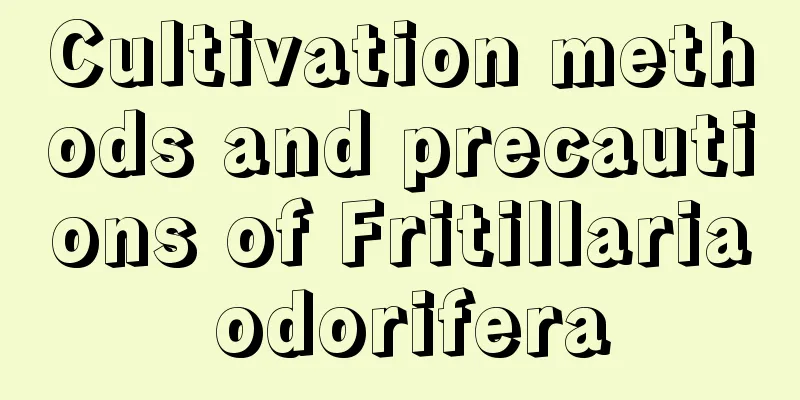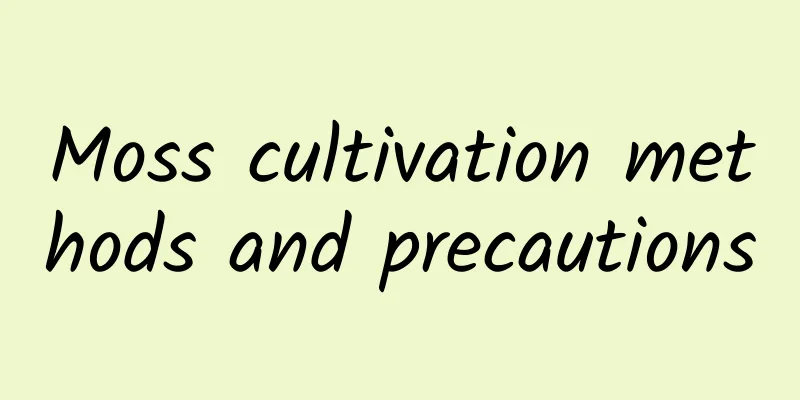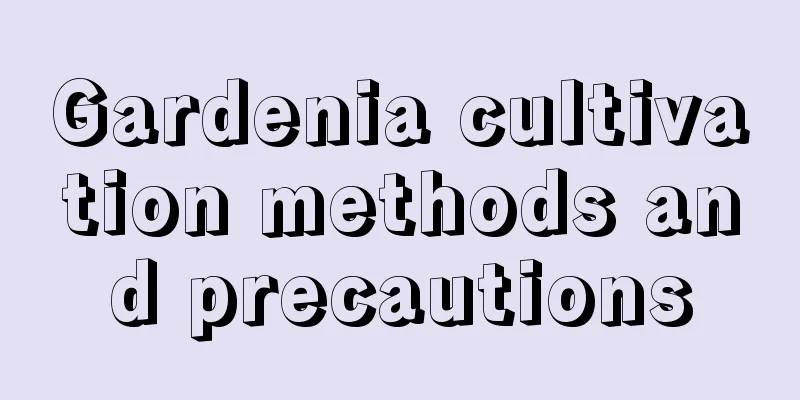Cultivation methods and precautions of Fritillaria odorifera

Cultivation method of Fritillaria odoriferaSoil requirements for FritillariaThe requirements of Fritillaria for soil are relatively high. The field soil for planting Fritillaria floridulus should be loose, fertile, organic-rich, well-drained sandy soil. For potted Fritillaria floridulus, a mixed matrix of equal amounts of humus, garden soil and sand can be used. Temperature requirements of FritillariaFritillaria is shade-tolerant and cold-resistant, so it needs low-temperature treatment. It is recommended to keep the temperature between 5 and 9 degrees Celsius. The growth temperature of Fritillaria thunbergii is 7-20℃. When the Fritillaria is dormant in summer, the bulbs can be collected and stored at a temperature of about 13°C. Precautions for cultivating FritillariaCommon diseases of Fritillaria odoratum and their controlCommon diseases of Fritillaria cirrhosa include rust and gray mold. Rust disease mainly occurs on the back of leaves, petioles, and base of stems of the Fritillaria odorata. Symptoms include the appearance of many brown spore groups. In severe cases, the Fritillaria odorata will wither and die early. The main method for preventing and controlling rust is to strengthen management and remove stumps in time. To prevent the occurrence of rust, 1000 times diluted thiophanate-methyl and new lipid film can be mixed and sprayed before the disease occurs. The symptoms of gray mold are the appearance of water-soaked spots on the green leaves and leaf tips of the Fritillaria. In severe cases, the leaf will wither and die. The method to prevent and control gray mold is to spray a mixture of 500 times diluted mancozeb and new lipid film. |
<<: The difference between Bauhinia and Bauhinia
>>: Varieties of colored calla lilies
Recommend
How to shape the landscape with Jinping Ping rattan
The shaping technique of jingpin rattan The plant...
What to do if the leaves of Kalanchoe are burnt
1. Lack of light If there is a lack of light for ...
When to change the water for hydroponic hyacinth
Does hydroponic hyacinth need water change? When ...
Ginkgo tree growth environment conditions and characteristics
Ginkgo tree growth environment conditions and req...
The growing environment and conditions of yellow peaches. In which areas do they grow?
Yellow peach growing environment conditions Yello...
Why does the root of green radish rot and how to treat it
1. Why do roots rot? 1. Soil cultivation: For soi...
Making and maintaining small-leaf gardenia bonsai
Selection of small-leaf gardenia bonsai "Ora...
Causes and treatments for yellow leaves of silver-edged spider plant
1. Too much light Reason: It likes to stay in a s...
How to plant worry-free flowers
Planting environment required: The worry-free flo...
When a small pill made of rice water was sprinkled into the flower pots, 20 pots of flowers died overnight. Why?
The roots of newly planted flowers rotted as soon...
How to propagate blue echinops
Seed propagation of blue echinops The seed propag...
Where is the best place for apple trees to grow? Suitable growing environment
Where do apple trees grow? Apple trees are suitab...
Cultivation methods and precautions of golden tower
The golden tower is very easy to grow. It is also...
Is it better to use a large pot or a small pot for Christmas cactus? What kind of pot is best for Christmas cactus?
Christmas cactus is a plant that is afraid of sta...
Components of a tree
1. Root The roots are the nutritional organs of t...









